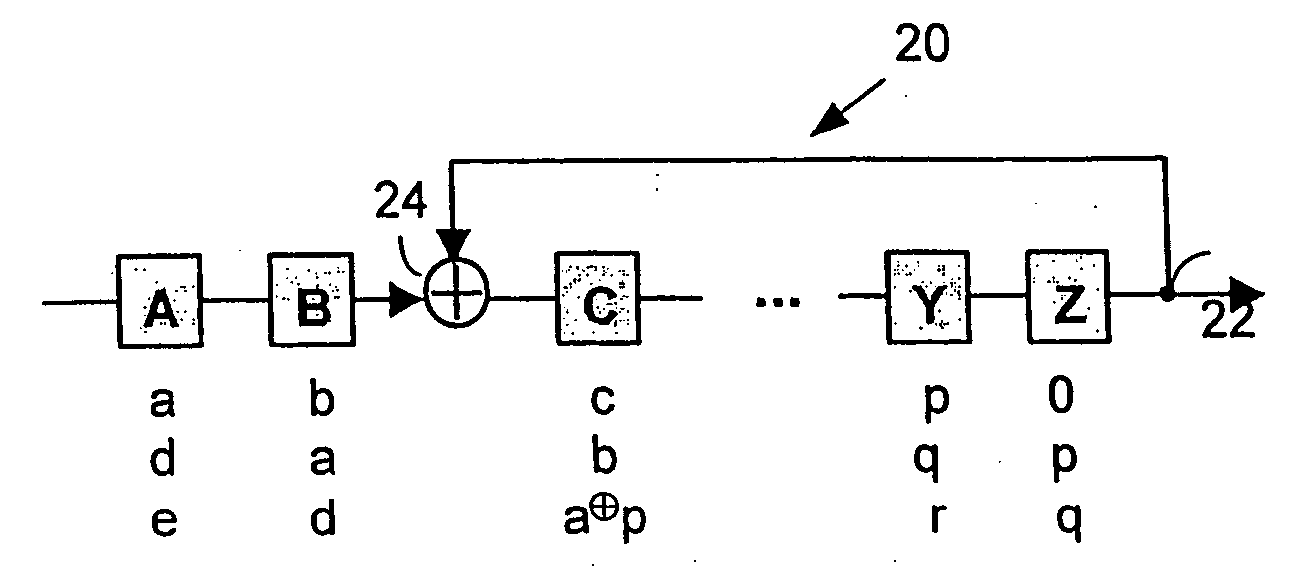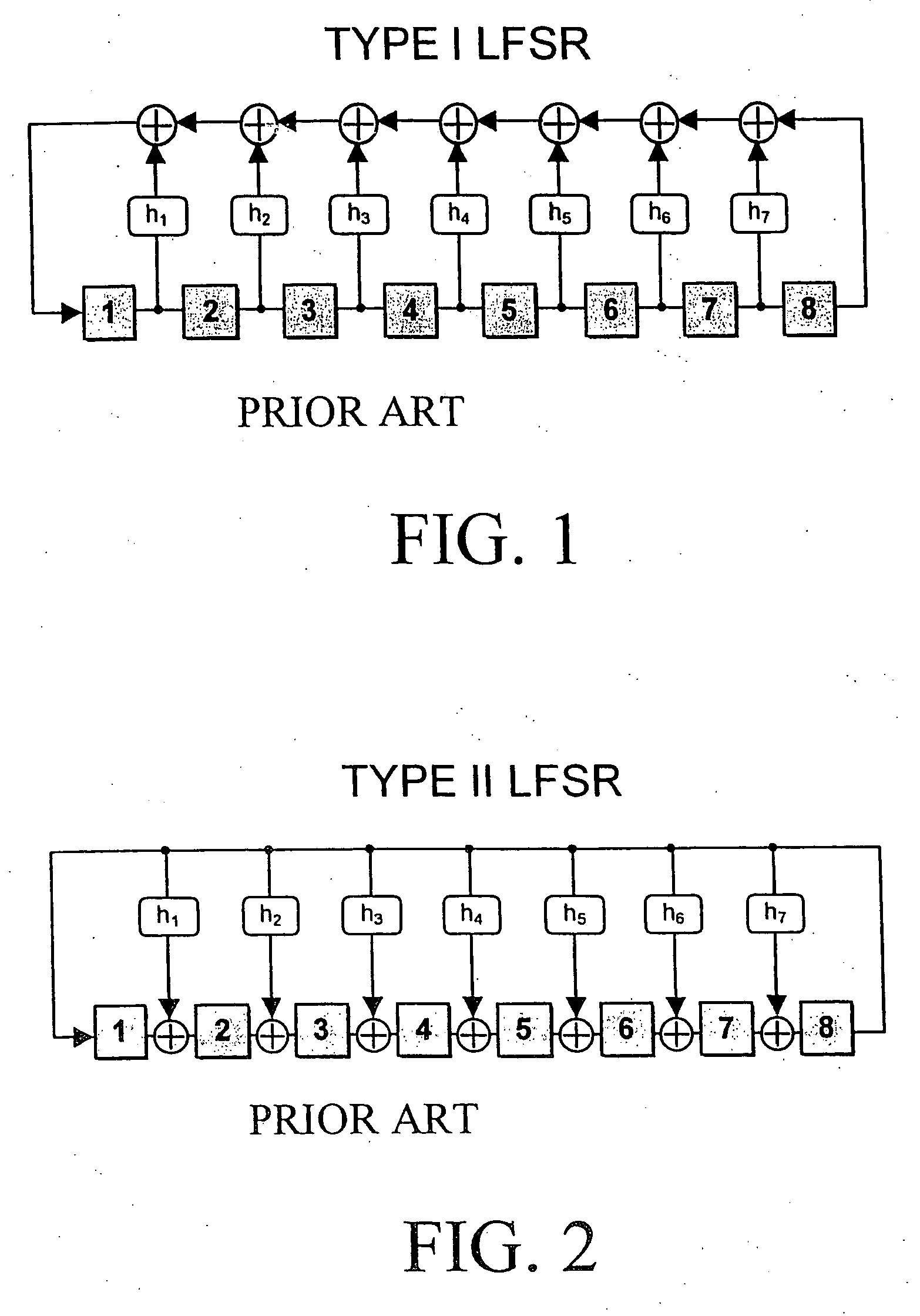Method for synthesizing linear finite state machines
a finite state machine and linear technology, applied in the field of linear finite state machine synthesizing, can solve the problems of limited performance of the limited performance of their respective elements, and achieve the highest operating speed of conventional lfsr-based generators, encoders, decoders or compactors. performance limitation
- Summary
- Abstract
- Description
- Claims
- Application Information
AI Technical Summary
Problems solved by technology
Method used
Image
Examples
Embodiment Construction
[0030] In the exemplary embodiments shown and described herein, methods for synthesizing LFSMs in accordance with the invention are implemented in software stored on a computer-readable medium and executed on a general-purpose computer system. Such a computer system is represented by block 18 in FIG. 3. The invention, for example, can be implemented in computer aided-design tools that explore the domain of possible solutions and different trade-offs concerning the layout of LFSRs. For clarity, only those aspects of the software germane to the invention are described; product details well known in the art are omitted. For the same reason, the computer hardware is not described in further detail. It should appreciated that the invention is not limited to use with computer system 18 or any particular computer language or program.
[0031]FIG. 2 shows an LFSM in the form of an arbitrary maximum-length type II LFSR with n memory elements such as flip-flops or latches and a number of feedba...
PUM
 Login to View More
Login to View More Abstract
Description
Claims
Application Information
 Login to View More
Login to View More - R&D
- Intellectual Property
- Life Sciences
- Materials
- Tech Scout
- Unparalleled Data Quality
- Higher Quality Content
- 60% Fewer Hallucinations
Browse by: Latest US Patents, China's latest patents, Technical Efficacy Thesaurus, Application Domain, Technology Topic, Popular Technical Reports.
© 2025 PatSnap. All rights reserved.Legal|Privacy policy|Modern Slavery Act Transparency Statement|Sitemap|About US| Contact US: help@patsnap.com



